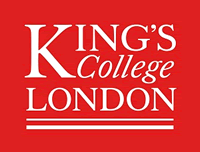Traditionally, a cell’s nucleus has been regarded as a passive organelle that stores and protects the genome, facilitating transcription and replication. However, breakthrough studies have revealed it is a dynamic structure and mechanical sensor for physical cues within the tissue microenvironment.
The overall objective of this project is to image nuclear dynamics for the first time in living, intact hearts to gain insight into understanding how forces that arise from outside the nucleus (extrinsic) and inside the nucleus (intrinsic) contribute to nuclear deformation and function. The importance of understanding this in normal tissue is highlighted by the various diseases that are caused by defects in the nuclear envelope that surrounds the nucleus.
To achieve this objective, live imaging on beating hearts using state-of-the-art 3D light-sheet imaging will be performed. Once established, hearts from different mutant models of nuclear envelope dysfunction will be employed and nuclear dynamics extracted. Furthermore, acute drug addition will be used to modulate muscle contraction and chromatin organization in beating mammalian hearts.
To address the main objective, the project will involve 3 highly inter-disciplinary approaches:
- Bioengineering/ biophysics: Optimization of light-sheet imaging platform to image beating hearts and nuclear dynamics in real-time and in 3D.(Years 1-2)
- In vivo and ex vivo approaches: Surgical techniques to extract intact fetal mouse hearts, establishing ex vivo tissue culture and mouse genetics and genotyping.(Years 2-3)
- Imaging acquisition and post-acquisition software development: Development of code on Matlab/ Fiji software to enable image analysis of nuclear dynamics and automated extraction of nuclear shape/ deformation / strain parameters.(Years 2-4)
This project involves an industrial placement at M2. M2 encourage student interaction and training in collaborative projects to ensure their maximum development, as well as providing a well-rounded understanding of academic and commercial expectations. This will broaden the opportunities open to the student and increase future employability. The student will be able to work at the M2 on-site location in London and work in close proximity with optical engineers and research scientists, that will provide valuable input to the progression of their own project by leading the approaches in an experienced environment to maximise the project output. This will provide the student with research resources and support invaluable to such a collaborative project. The student will be able to present their research in a commercial environment and target other end users, learning to disseminate their research to a broader audience.
Website: http://www.stroudlab.com/
Twitter: https://twitter.com/stroud_lab
Department Name:
BHF Centre of Research Excellence, Faculty of Life Sciences and Medicine
Funding:
The MRC DTP only offer 4-year fully funded studentship awards including a stipend, tuition fees, research training and support grant (RTSG) and a travel and conference allowance.
Stipend: The rate for academic year 22/23 is £22,168. This is a tax-free payment made to the student.
Tuition fees: The studentship award covers the full tuition fee amount.
Research training and support grant (RTSG): £6,400 per year. Can also be known as bench fees, which is a contribution towards consumable costs of training research students.
Travel and conference allowance: £300 per year. This is a contribution to the costs of attending scientific conferences, workshops, or visits to collaborators.
Flexible Supplement: Available to students funded by the MRC, this can help fund a wide range of research and training activities.
Funding source: This project is co-funded by the MRC and the Industry Partner M Square Life.
Application Web Page:
Full details on how to apply here: https://kcl-mrcdtp.com/apply/application-process/

 Continue with Facebook
Continue with Facebook



